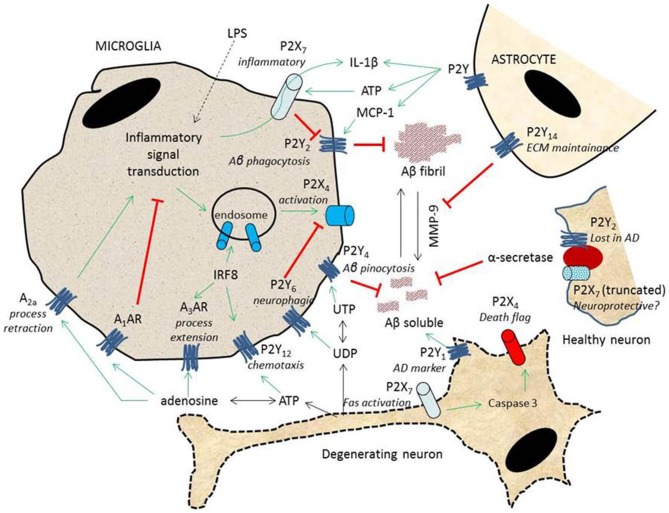Figure 2.
P2 receptors modulate neuroinflammation. A simplified model based on the literature mentioned in this review summarizes the interactions between neurons and glial cells. Pro-inflammatory signals modulate P2X7-mediated release of IL-1β and surface expression of P2X4 receptors in the presence of ATP released by degenerating neurons and reactive astrocytes. On the surface of neurons, P2X7 receptors mediate apoptosis with caspase 3-dependent expression of P2X4 receptors as “flags” for microglial engulfment. Microglial migration to sites of insult is mediated by P2Y12 and adenosine A3 receptors and its neurophagic activity through P2Y6 receptors. While A1 adenosine receptors inhibit general inflammatory pathways, A2a receptors activate COX-2 as well as retract microglial processes. In healthy neurons, truncated P2X7 and P2Y2 receptors enhance α-secretase activity, preventing the formation of amyloid deposits. Amyloid formation is also immediately cleared through microglial phagocytosis, mediated by P2Y2 receptors; pinocytosis, through P2Y4 receptors; and activity of MMP-9, inhibited by the tonic activity of P2Y14 receptors.

